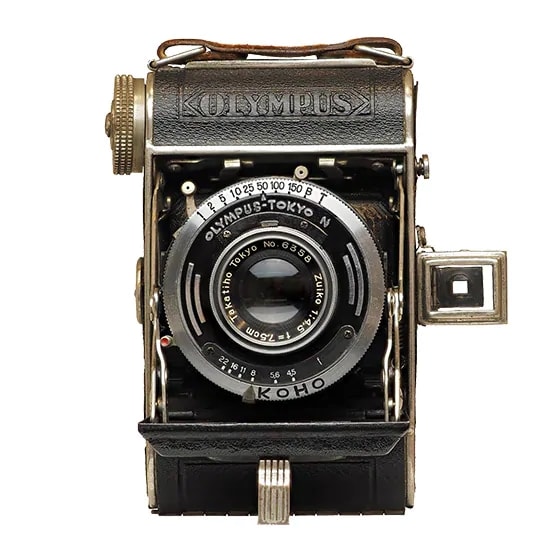
Sad but true. In a June 24 press release , Olympus confirmed its intention to sell its digital camera manufacturing units to its partners, JIP (Japan Industrial Partners). Thus, which bought the VAIO division from Sony.
The history of the Olympus brand began in 1919, and for the first time it appeared on the market as Takachiho Seisakusho - after the Takachiho peak (Takamagahara mountain range in Gunma prefecture in Japan). Since then, the company has undergone rebranding several times, and the modern version of the brand we are used to was created in 2003.

Semi-Olympus I. Photo source: olympus-global.com
Interesting fact : 84 years have passed since the release of the first Semi-Olympus I camera (a copy of the German Balda Baldax ).
One of the most important victories in the company's modern history was the collaboration with Panasonic. On August 5, 2008, the Micro 4/3 (Micro Four Thirds) matrix format was introduced. The new standard made it possible not only to reduce the flange distance by 2 times, but also to get rid of the mirror in the structure. In the same year, Olympus and Panasonic demonstrated their first mirrorless camera prototype at Photokina-2008. It was Micro 4/3 that became the founder of all modern mirrorless cameras.
What happened?
Competition from smartphones and the need to cut costs. It was these factors that caused the company to refuse further development in the field of digital cameras. Over the past three years, the company's management has recorded losses associated with a global drop in demand for cameras. Nevertheless, more than a century of experience in optical equipment will not be lost on this. Olympus will focus on the design and manufacture of medical devices.
What does this mean for the average owner of an OM-D camera or another Olympus Micro 4/3 camera? I fully admit that their story will end there, as well as the history of the M.ZUIKO lens brand.

For me personally, as the owner of the OM-D EM10 Mark II, this news was very unpleasant. Despite the inconvenient main menu, the device is perfectly customizable. Almost any function can be “hung” on any button or control dial. Perfect color reproduction (better only from premium brands, for example, Leica) and nimble work almost always gave me exactly the picture I expected to get. For example, most of the photographs for the article Archaeologists of the digital age were taken precisely on this camera.
Should I run to the store right now and buy the cameras that are still in the stores? The question remains open. It must be clearly understood that, perhaps, there will be no software updates soon, there will be a shortage of spare parts, or it will be impossible to fix the camera in the official service. On the other hand, if JIP, as Olympus claims in a press release, continues to work on the brand and provides support for released cameras, then these fears will not come true. The transaction is expected to be closed in September this year.